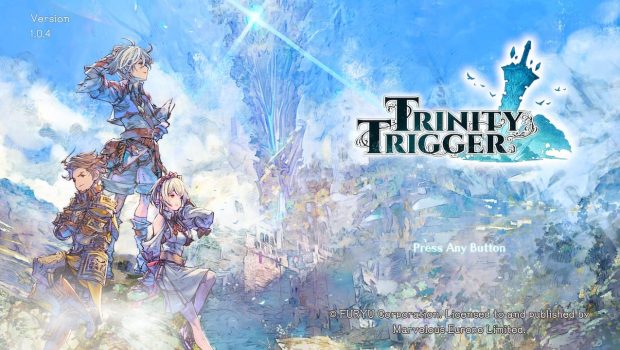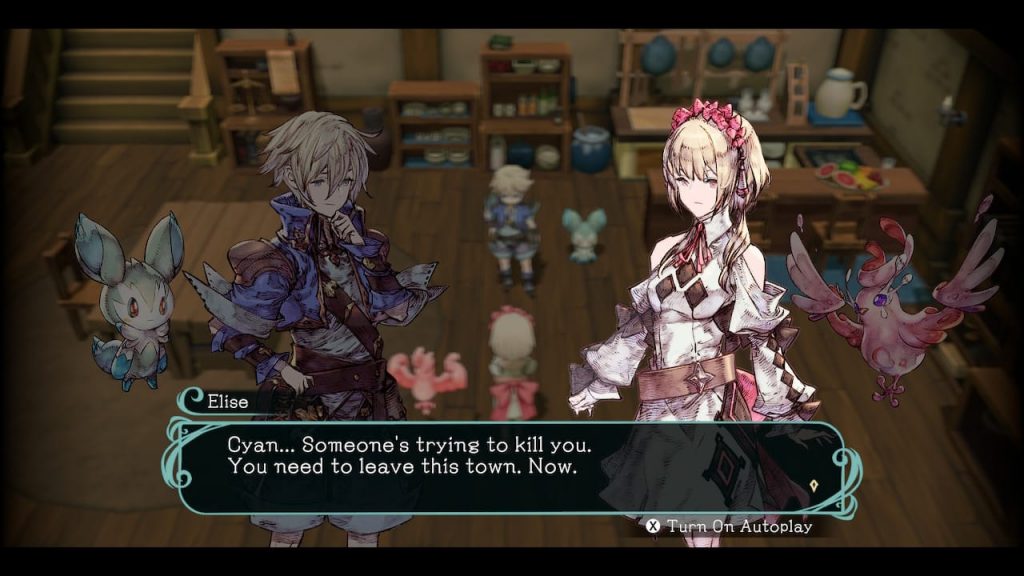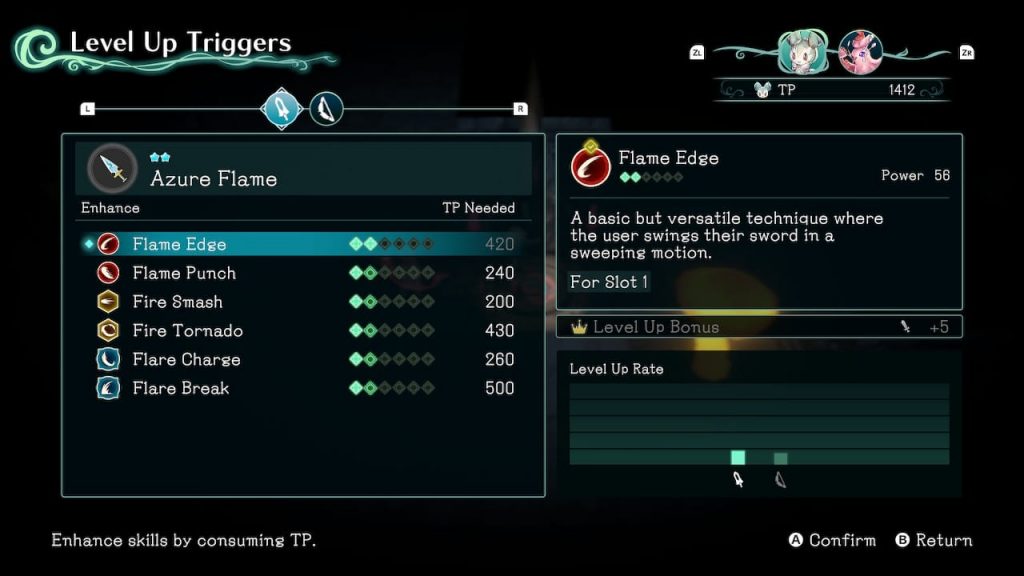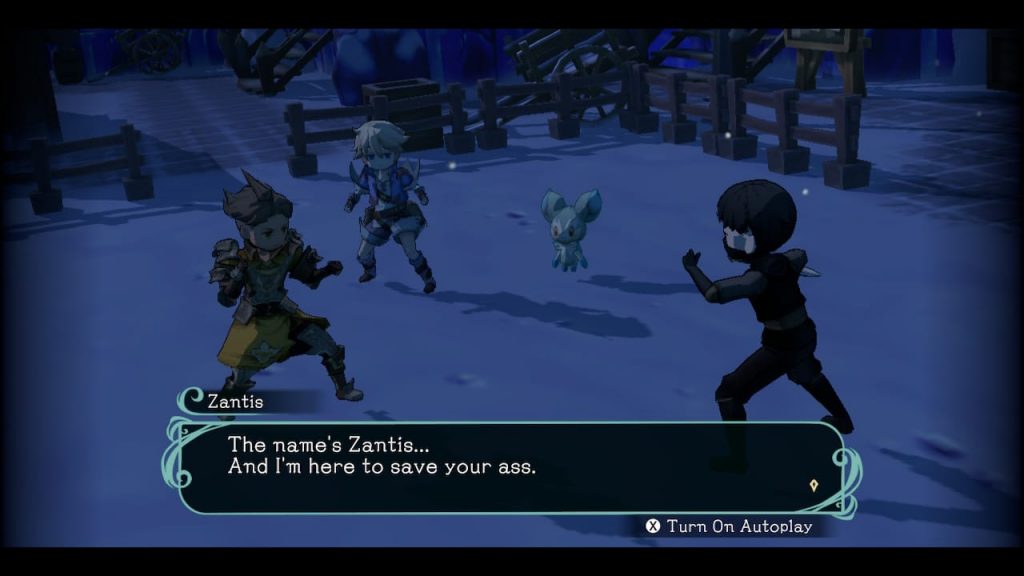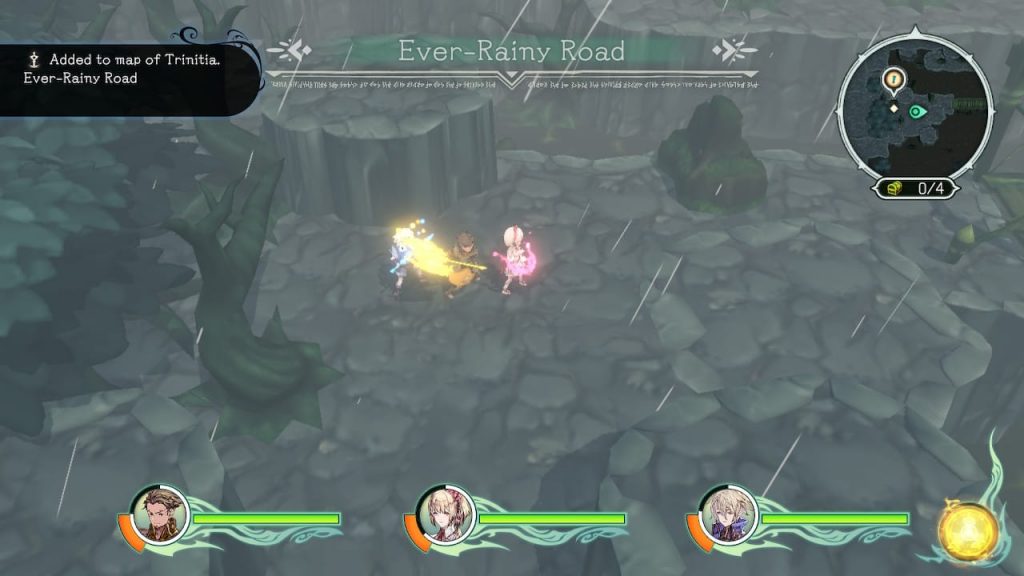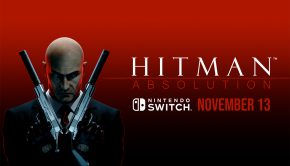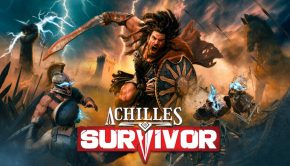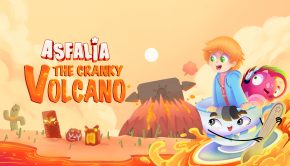Trinity Trigger Switch Review
Summary: Trinity Trigger is a graphically bland but thoroughly enjoyable blend of action, exploration and RPG elements – the only thing holding it back is a story that doesn’t seem interested enough in the potential of its own fascinating worldbuilding.
4
Action RPG meets 2D Zelda
Trinity Trigger’s plot synopsis is one of a typical JRPG. Cyan, who thinks he’s just a normal guy, finds out that he is actually one of the most important people in the world – a god chose him at birth to be their “god warrior”, and eventually duel in their name against the warrior chosen by another god to decide the fate of their war. After a chance encounter with a Trigger – animal-like beings who can transform into weapons – they go on a journey together to defy their destiny, with two more heroes (Elise and Zantis, alongside their respective Triggers) eventually joining them. With a premise as relatively run-of-the-mill as this, what does this game do to stand out from its RPG brethren on the market? Let’s find out.
One of the first things I noticed about Trinity Trigger that was different compared to other RPGs I’ve played, is that nothing about the fights involves taking turns. Even when they’re action RPGs like this game, they usually have at least some turn based segments within their battles – so it was certainly interesting to play one that doesn’t have those. Trinity Trigger’s gameplay is closer to that of a 2D Zelda game – fighting monsters on the overworld itself and exploring dungeons from a top-down perspective – but with a bigger focus on combat and RPG elements, and a smaller focus on puzzle solving. The weapons you obtain in Trinity Trigger (of which there are 8) illustrate this – I can count the amount of times I used them to interact with the world in an interesting way on two hands, whereas I would probably need a thousand hands to count the number of enemies I slayed with them. Speaking of enemies, they all have weaknesses and resistances to specific weapons – encouraging you to use more than just one. The basic moment-to-moment combat is comprised of three intertwining elements: attacking, dodging and the synchro gauge. Attacking drains the synchro gauge, and your attacks will do very little damage once it runs out. The gauge refills over time and also by dodging right before an enemy’s attack connects – making encounters with them, especially bosses, a fun dance of attacking and dodging at the right moments.
The last pieces of the Trinity Trigger combat puzzle are the two “wheels” you can open at any point to pause the action with the press of a button: the item wheel to heal HP, remove status effects or buff stats, and the weapon wheel to switch weapons or change said weapon’s attacks. As the item wheel is always available, they smartly limited the amount of each specific (healing) item you can have in total – your party would probably be immortal otherwise. When it comes to weapons, there are a lot of ways you can customize them to create your own playstyle. They can be equipped with special materials (called Manatite) to do things such as permanently buff HP/defense/attack, make a character more resistant to status effects, or gain more TP/EXP upon defeating enemies. Speaking of TP, that is the currency used to enhance your skills. A weapon has three separate skills that correspond to how many times you press the attack button – pressing it once will let you do skill 1, then pressing it again does skill 2, then pressing it a third time performs skill 3. For each of these skill “slots”, you can pick between two options in the weapon wheel, with the choice usually coming down to power versus utility.
With these weapons in your hands, you’ll be exploring all the towns and environments that Trinitia – home to monsters, people, and even creatures in-between – has to offer. Unfortunately, I wouldn’t say they look particularly great. The art style is just kind of bland – which is especially evident in the 3D character models that have trouble emoting well. The animated cutscenes and drawn portraits are at least a lot more appealing, but for a majority of your playtime you will not be looking at those. While there might be little eye candy in the game, I am pleased to report that it will be your ears receiving candy instead. I was already humming along within the first hour, which is always a good sign. Unique and catchy tunes for nearly every area and town that also fit them very well – there’s not much more I can ask for from a video game soundtrack. In that same vein, the voice acting is also solid across the board.
Despite the good performances by the voice actors, I sadly could not find myself very invested in the characters or the story as a whole. The problem is not the standard JRPG plot – it’s the lack of strong character moments and meaningful conversations between the characters that doesn’t have to do with said plot. They have some fun banter every now and then, but that was not enough to really inform me what the heroes are like outside of their “job” as heroes. The generally repetitive story structure – go into town, find out there’s a dungeon nearby, explore the dungeon to get a new weapon, maybe fight a boss, repeat – does not help matters.
Speaking of dungeons, they are the most prominent examples of the game’s genuinely cool worldbuilding. As a result of the war between gods, their divine weapons (called Arma) rained down upon the world, and over time they “became” dungeons with their presence completely changing the environment around them – most of the time in a negative way. For example, a town near one has its population in a perpetual state of happiness no matter what happens to them, and a lot of miserable people decide to go live there to be happy. Sadly, the characters do not do much in this town within the story, and it is up to a few measly quests to explore this fascinating place – which is emblematic of the narrative as a whole. It has interesting concepts and ideas, but not many interesting things to actually say about them.
A lot of games call optional content sidequests, but in Trinity Trigger, they are just called quests – and there’s a good reason for that. I was compelled to do all of them before finishing the main story, not only because I liked the game and wanted to get more out of it – but also because the rewards for some of them are too good to pass up. What are these rewards then, you may ask? Weapons for characters. If you ignore these quests, you will eventually have the 8 weapons in the game spread across your team (with some weapons still being shared between party members), but you won’t have them on all three characters individually. I’m of a couple minds about this – not doing the weapon quests unnecessarily limits your options, but I did like the stretches of the game’s story where characters had their own unique weapons, as it made switching characters more meaningful. By the end of the game, the differences between characters are so minimal that it feels like you’re playing as your favorite weapons, rather than your favorite characters. This might have been done because the game actually supports multiplayer, which definitely sounds fun – but it’s unfortunately local only, so I would just barely consider this a selling point.
Final Thoughts?
In conclusion, Trinity Trigger is a great game! The gameplay and soundtrack really make it stand out, and allow me to overlook the mediocre graphics and story pretty easily. I spent around 35 hours playing it, and that is while doing all optional content as I said earlier, which took up about a 1/3rd of that time. That number may sound low for an RPG, but seeing as the game is not sold at full price this is not a bad amount of content whatsoever. I only wish the game was longer because of the potential I see in it – I wanted more time to flesh out the gameplay, the characters, the world, everything. I wanted Trinity Trigger to be truly outstanding, but it sadly doesn’t go far enough with its ideas and concepts to earn that label. Even so, I most definitely recommend the game to fans of action RPG gameplay – and I’ll be wishing for a (spiritual) sequel in the meantime.


